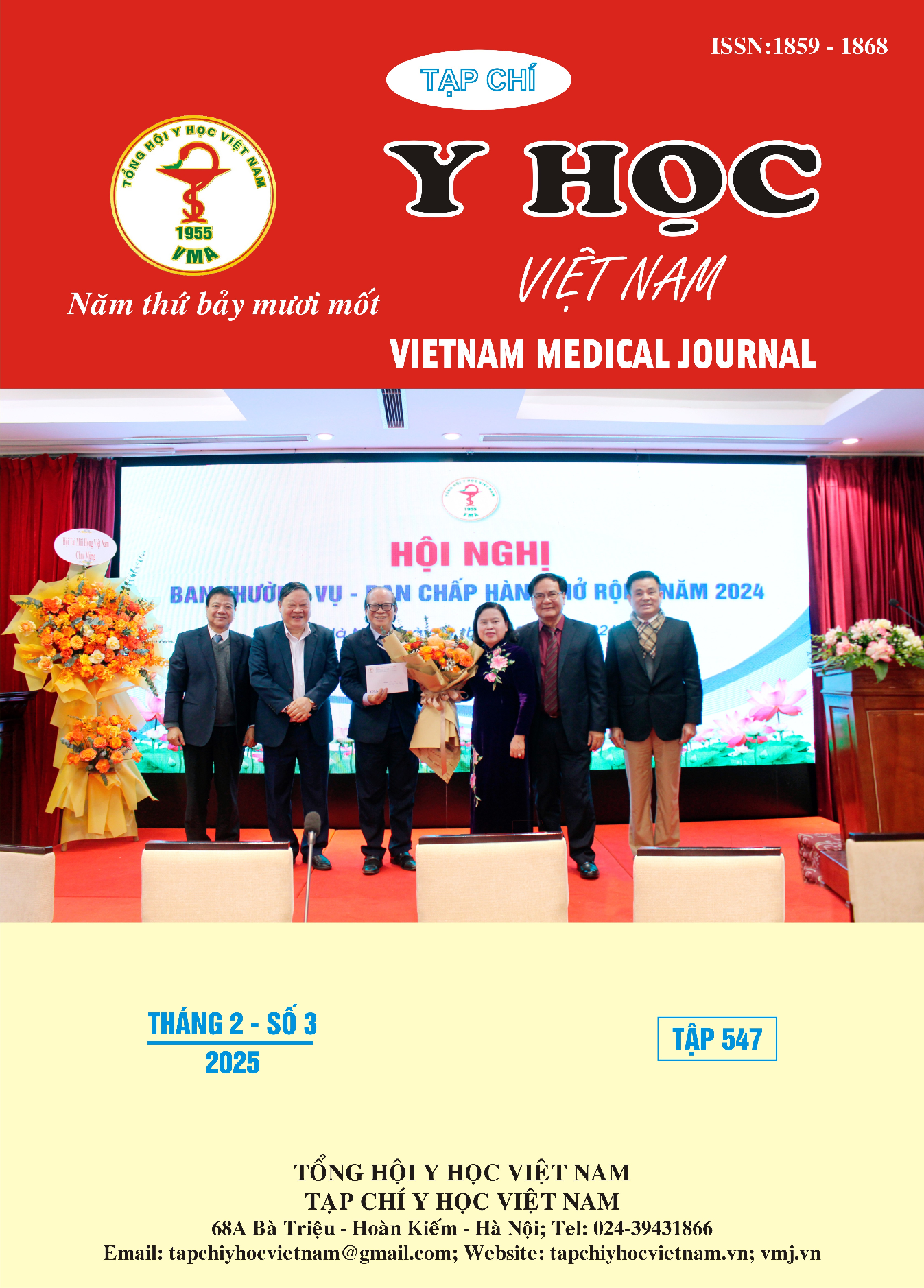PROGNOSTIC VALUE OF CENTRAL VENOUS -ARTERIAL CO₂ DIFFERENCE TO ARTERIAL - CENTRAL VENOUS O₂ DIFFERENCE RATIO IN PEDIATRIC SEPTIC SHOCK
Main Article Content
Abstract
Objective: Septic shock is a condition characterized by an imbalance between oxygen supply and consumption, leading to tissue hypoxia, multi-organ failure, and high mortality rates. Early identification of tissue hypoxia is a critical factor in treating shock. The study aims to assess the predictive value of the central venous -arterial CO₂ difference (Cv-aCO₂) to arterial - central venous O₂ difference (Da-vO₂) ratio in managing pediatric patients with septic shock. Methods: This was a prospective descriptive study. All children diagnosed with septic shock were included. The Cv-aCO₂ and Da-vO₂ indices were collected and calculated from central venous and arterial blood gases using the GEM 3500 analyzer at specific time points: T0 (at the start of shock treatment), T6 (6 hours post-treatment), T12 (12 hours post-treatment), and T24 (24 hours post-treatment). Treatment outcomes were assessed based on duration of mechanical ventilation (days), length of stay in the intensive care unit (ICU) (days), and survival or mortality. Results: Among the 81 patients included in the study, 64 patients survived (79%), with a median mechanical ventilation duration of 9.1 days (range: 0–28) and a median ICU stay of 12.3 days (range: 1–28). The Cv-aCO₂/Da-vO₂ ratio cutoff value of 1 at the start of treatment (T0) allowed differentiation between the survival and mortality groups, with an ROC of 0.604 (95% CI: 0.45–0.76), sensitivity of 76.6%, and specificity of 88%. The Cv-aCO₂/Da-vO₂ ratio was significantly associated with the prognosis for mechanical ventilation duration and ICU length of stay. Conclusion: The Cv-aCO₂/Da-vO₂ ratio is a promising index for evaluating mechanical ventilation duration, ICU length of stay, and mortality prognosis in pediatric patients with septic shock
Article Details
Keywords
septic shock, Cv-aCO₂, Da-vO₂, tỷ lệ Cv-aCO₂/Da-vO₂
References
2. Ospina-Tascón GA, Umaña M, Bermúdez W, et al. Combination of arterial lactate levels and venous-arterial CO2 to arterial-venous O2 content difference ratio as markers of resuscitation in patients with septic shock. Intensive Care Med. 2015; 41(5): 796-805. doi:10.1007/s00134-015-3720-6
3. Ospina-Tascón GA, Madriñán HJ. Combination of O2 and CO2-derived variables to detect tissue hypoxia in the critically ill patient. J Thorac Dis. 2019;11 (Suppl 11):S1544-S1550. doi:10.21037/ jtd.2019.03.52.
4. Zang H, Shen X, Wang S, He Z, Cheng H. Evaluation and prognostic value of Cv-aCO2/Da-vO2 in patients with septic shock receiving fluid resuscitation Cv-aCO2/Ca-vO2. Exp Ther Med. 2019;18(5): 3631-3635. doi:10.3892/etm. 2019.7956
5. He H, Liu D, Long Y, et al. High central venous-to-arterial CO2 difference/arterial-central venous O2 difference ratio is associated with poor lactate clearance in septic patients after resuscitation. J Crit Care. 2016;31(1):76-81. doi:10.1016/j.jcrc. 2015.10.017.
6. He H, Long Y, Liu D, et al. The Prognostic Value of Central Venous-to-Arterial CO2 Difference/Arterial-Central Venous O2 Difference Ratio in Septic Shock Patients with Central Venous O2 Saturation ≥80%: SHOCK. 2017;48(5):551-557. doi:10.1097/SHK.0000000000000893.
7. Mesquida J, Saludes P, Gruartmoner G, et al. Central venous-to-arterial carbon dioxide difference combined with arterial-to-venous oxygen content difference is associated with lactate evolution in the hemodynamic resuscitation process in early septic shock. Crit Care Lond Engl. 2015;19:126. doi:10.1186/ s13054-015-0858-0
8. Wang X, Gao X, Cao W, et al. Prognostic value of arterial lactate combined with central venous-to-arterial carbon dioxide difference to arterial-to-central venous oxygen content difference ratio in septic shock patients. Zhonghua Wei Zhong Bing Ji Jiu Yi Xue. 2020 Jan;32(1):39-43. doi: 10.3760/cma.j.cn121430-20191226-00007.


